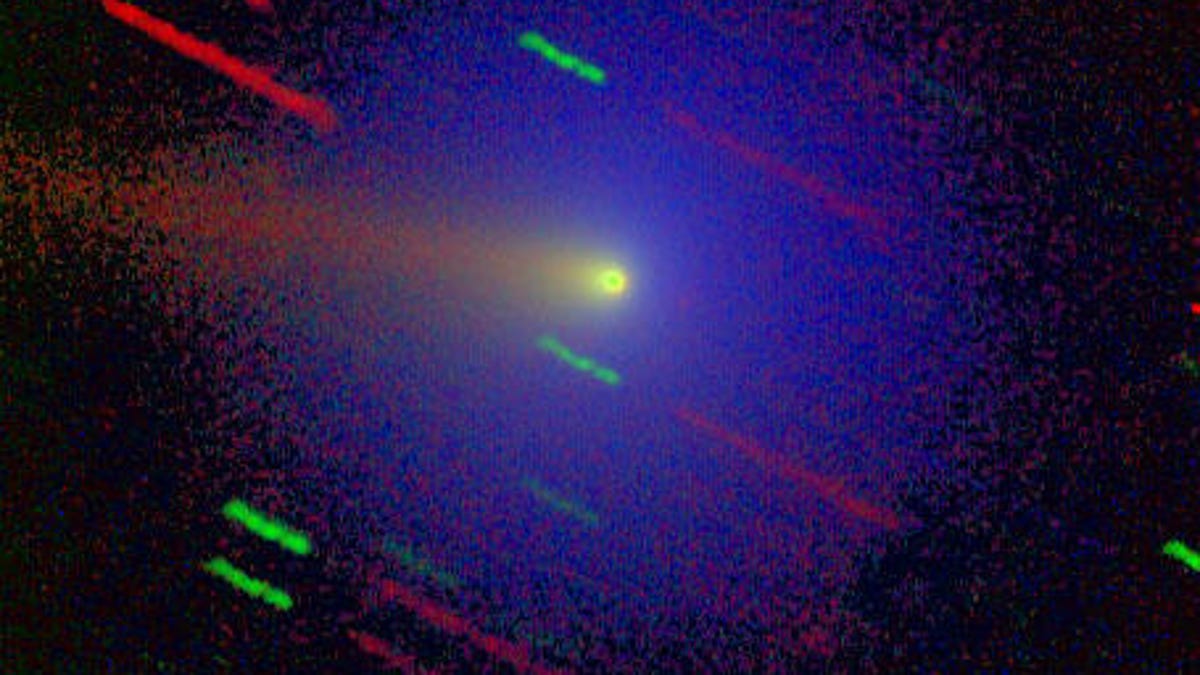Hyperactive comet Wirtanen to show off during historically close flyby
The small comet's latest pass by Earth could be its brightest, making it visible for weeks during the holiday season.

Comet Wirtanen shows up in this three-color image from an earlier pass by the sun in 2012.
The comet 46P/Wirtanen was discovered in 1948, but this could be the best year to get a good look at the small, hyperactive space ball of rock, ice and debris.
That's because when the comet passes nearest to Earth on Dec. 16 at a distance of 7.1 million miles (11.5 million kilometers), it'll be the 10th closest encounter with our planet since 1950. And it could be the brightest of the entire top 10.
It should become visible with the naked eye in the night sky as it approaches and could remain that way for weeks, according to the University of Maryland's astronomy department, which is leading an observation campaign of the comet.
Wirtanen has a relatively small nucleus, but is part of a small family of hyperactive comets that may contain high amounts of volatile ice. As it nears our sun, the ice melts and feeds a big, bright coma (the cloudy part, including the tail, of a comet).
While it'll be passing close by for a comet, it'll still remain about 30 times farther from us than the moon and has no chance of impacting Earth, so you can exhale now.
The comet, discovered by Carl Wirtanen, was actually the original target of the Rosetta spacecraft that visited and landed on the comet 67P, and it could be a destination for another spacecraft in the future.
Astronomers are already busy tracking and observing Wirtanen, but expect it to become the subject of some excitement and numerous star parties as it becomes visible to the rest of us in December.

